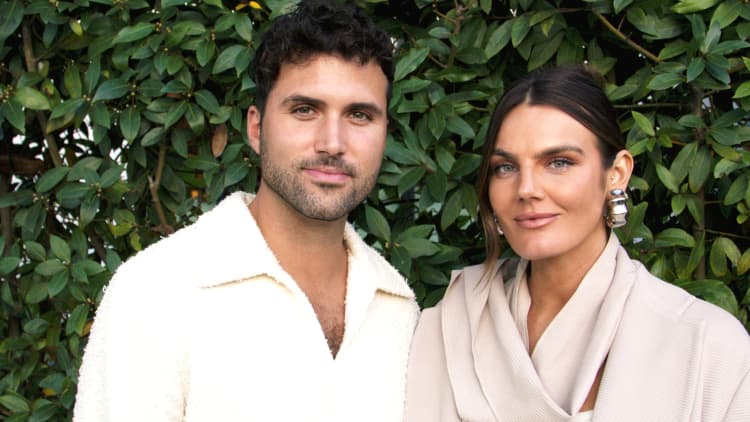For millions of Americans, tax time means a significant chunk of money hitting their bank account.
The IRS has received about 63 million returns so far for tax year 2023 and is issuing an average refund of $3,145, the agency reports. For those receiving a decent chunk of change, the question becomes what to do with the money.
If you don't have a fully funded emergency fund or if you carry a significant amount of debt, financial experts suggest using the money to address those issues first. If you've got those taken care of, you may consider investing the money, which brings up a second question: Do I put all the money in now, or invest it little by little?
For those with refunds to invest this year, the research says to dump it all in at once, says Ed deHaan, an accounting professor at the Stanford Graduate School of Business.
"What we very clearly see in our data is that trying to time the market is a mistake," he says. "You don't want to say, 'I'm gonna hold it in cash and make my deposit on this date.' It's typically better to just make the deposit once and invest it right away."
The more you think about your tax strategy, though, the more complex the decision gets, experts say. Here's why.
Why the math favors a lump sum investment for this year's refund
Wait a second, you may be thinking, why would I ever space out my investments over time when they could start growing now?
Investing over time, a strategy known as dollar-cost averaging, is popular among investment professionals. By investing the same amount of money at regular intervals, the thinking goes, you remove the pressure of trying to guess whether any time in particular is the right one to invest.
Invest gradually when the market is going down, and you buy shares at lower and lower prices with each interval, thereby mitigating some of your early losses and improving long-term performance. But follow the same strategy when the market is running up, and you're costing yourself money.
"The bulk of [researchers] say to lump sum it because, on average, the stock market has gone up over time," says Michael Wallace, a tax expert and CEO of Greenback Expat Tax Services. "It's down a lot, but on average, it's going up."
Researchers at Vanguard compared two theoretical stock portfolios from 1976 through 2022. The portfolio that followed a lump-sum strategy bested the one that employed three-month dollar-cost averaging 68% of the time.
Maybe you don't want a refund at all, though
When it comes down to it, the math isn't that complicated. As an investor, you want to maximize your time in a market that tends to trend upward and deliver compounding returns.
That's why investing professionals advise maximizing the contributions to your investing accounts as soon into the calendar year as possible. Ideally, on Jan. 1, you'd fill up your 401(k) and Roth IRA, for instance, and call it a year.
But remember, the maximum 2024 contribution to a 401(k) is $23,000, plus an extra $7,500 for workers age 50 and older. An IRA maxes out at $7,000, plus another $1,000 for older contributors.
If you've got that laying around, plunk it in; over time, you're doing the mathematically optimal thing.
Most people, however, invest smaller amounts at regular intervals. In fact, if you contribute to a workplace retirement account, you likely invest the money straight from your paycheck.
That's dollar-cost averaging, and there are reasons just beyond the practical ones that investing pros recommend it. By investing regularly, you thwart the temptation to try to time the market. Plus, the strategy guarantees that you'll buy more shares when the market is down and fewer when it's up.
So the tax refund question really only makes sense in a vacuum. If you got a refund this year, the research says to invest all of it now. But what about next year? After all, a refund is money you're getting back for overpaying the government throughout the year. If you're already investing at regular intervals, it makes sense to invest as much as you can as early as you can.
By adjusting your withholding, you can start getting what would be next year's refund in your paychecks now. That's money you could be investing much earlier than April 15, 2025.
"The government's not paying you that money; it's just that you're paying less in taxes on an ongoing basis," says Wallace. "As soon as you get that money you should be investing it, and that will maximize your returns."
Want to make extra money outside of your day job? Sign up for CNBC's new online course How to Earn Passive Income Online to learn about common passive income streams, tips to get started and real-life success stories. Register today and save 50% with discount code EARLYBIRD.
Plus, sign up for CNBC Make It's newsletter to get tips and tricks for success at work, with money and in life.



